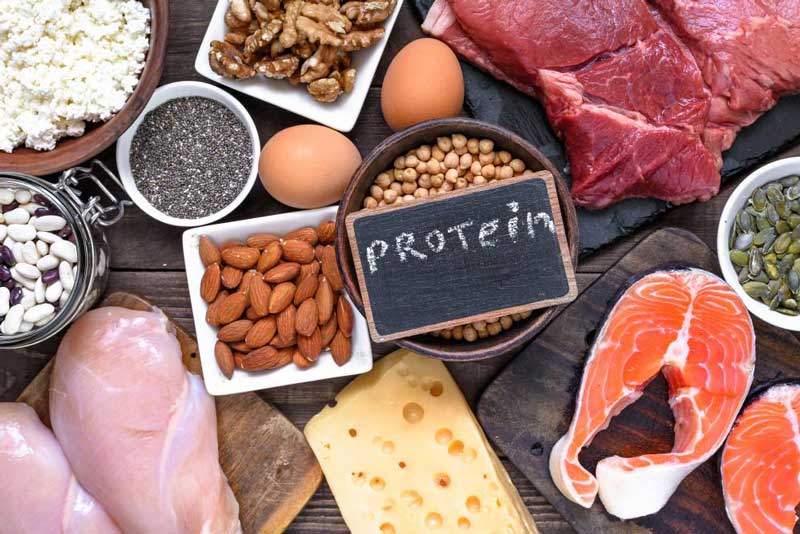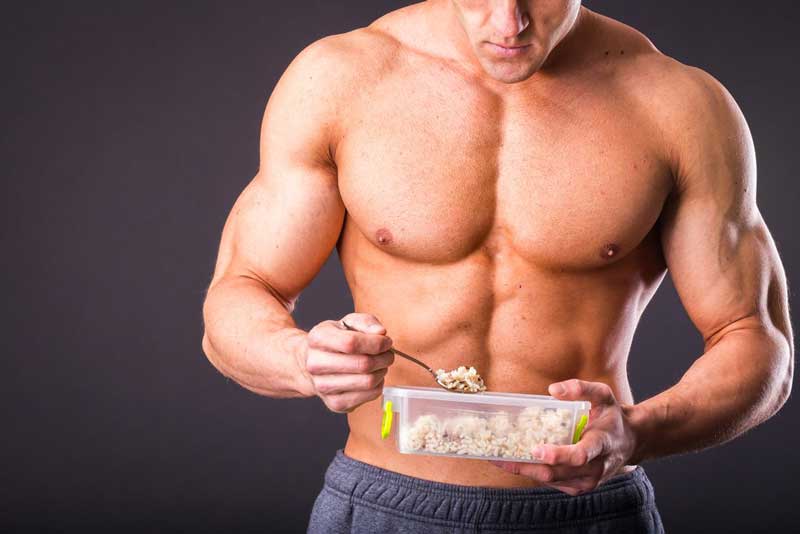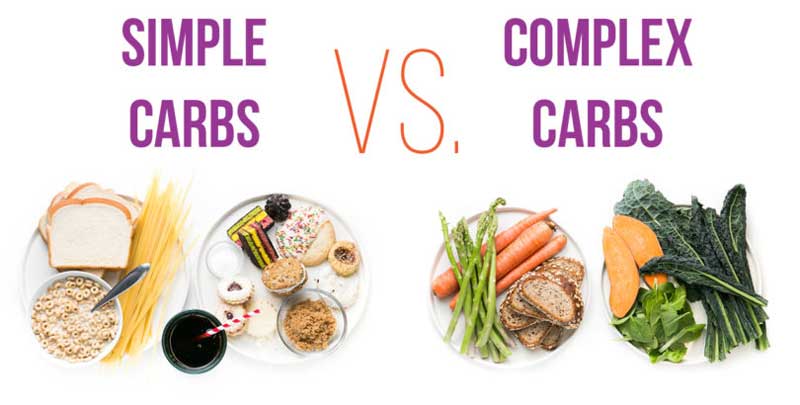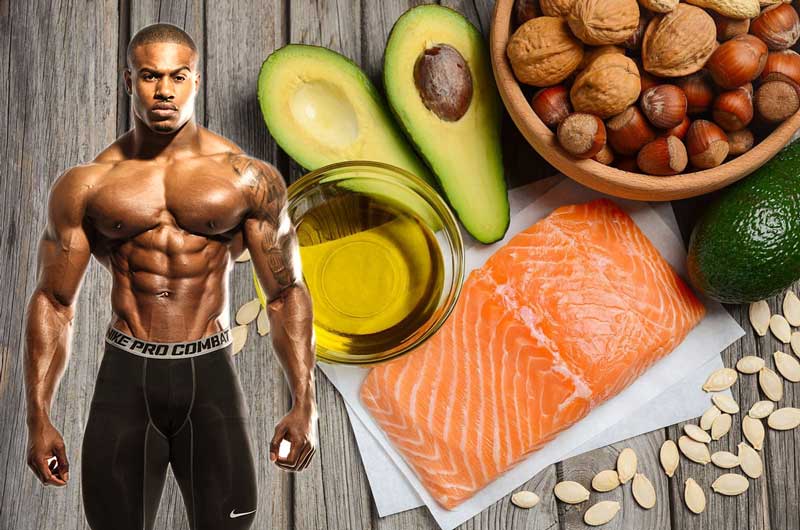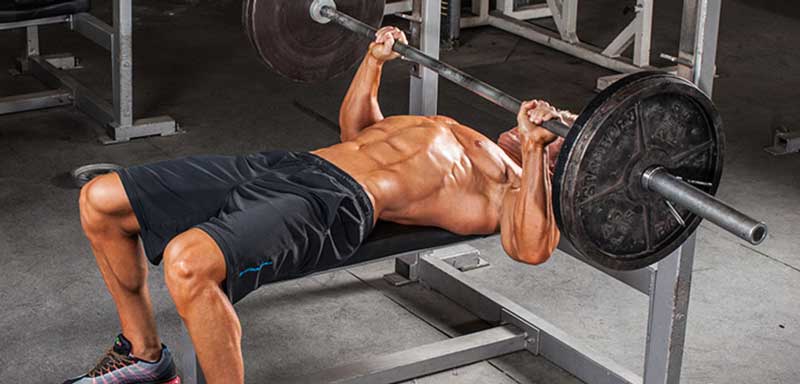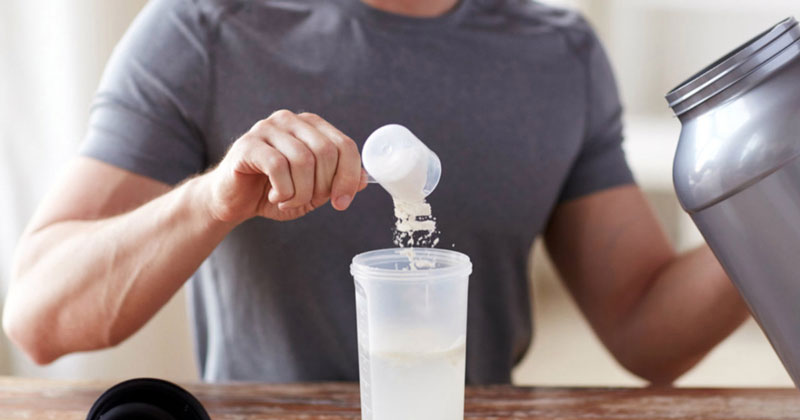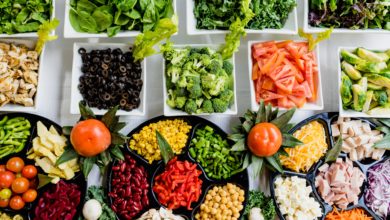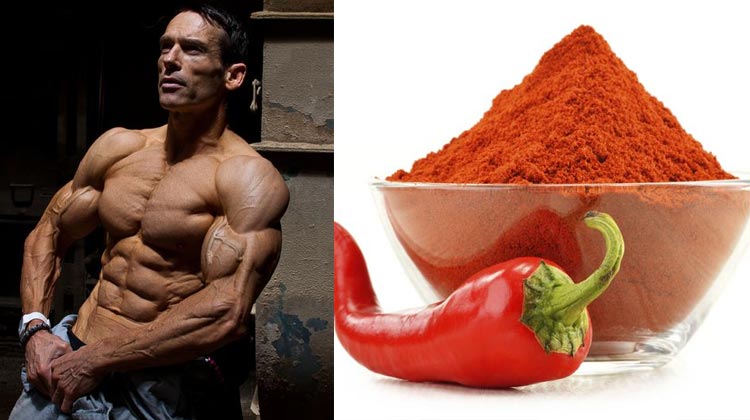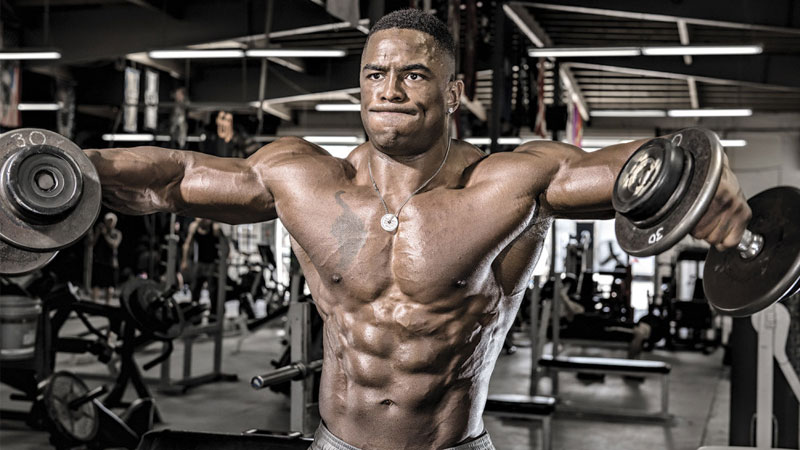
Do you want to build slabs of powerful lean mass without getting fat? We’ve got your back, bro. Here is a complete guide to everything you need to know about nailing a lean bulk.
Article Brodown:
- What is Lean Bulking?
- Clean vs Dirty Bulking Explained: The Misconception
- The Nutrition Explained
- The Workout Explained
- The Importance of Progression
- Supplements to Support a Lean Bulk
- FAQs
- Conclusion – Final Lift on Lean Bulking
What is Lean Bulking?
Bro, we know lifting life is all about the bulk. It’s the time when we eat like kings, build Godlike muscle, and hit the heavy reps hard. Our goal is simple – think big, act big, get big. Simple.
Lean bulking is the way smart bros get stacked. Why? Because rather than add size in any which way possible, lean bulking is all about stacking slabs of muscle – not fat.
It’s about using a proper muscle building training plan tag-teamed with precise nutrition. We’re talking big-ass compound lifts, progressive overload, a sh*t ton of lean protein.
This ain’t no dirty bulk, bro! We eat clean, lift dirty around here. Let’s do it!
Clean vs Dirty Bulking Explained: The Misconception
Bro – not all bulks are created equal! Sure, you can stack 50 lb of mass to your frame in a matter of weeks. Hell, anybody can do that if they eat cheeseburgers and drink milkshakes all day. Well done bro, you just graduated with honors from unhealthy high school.
Everybody knows that fat gainz ain’t real gainz. So, why are dirty bulks so popular? That’s easy bro. It’s because they’re, well, easy. Dirty bulking is simply the act of eating whatever the f*ck you want while training somewhat hard to build muscle. Scientifically it can work – but it’s not the best approach.
Clean bulking, on the other hand, is how true barbell warriors build their bodies. It’s the act of intelligently eating a nutritious diet that supports muscle growth while hitting the iron hard.
Simply put, the objective is to swell and grow muscle fibers without adding extra body fat. That way there’s no need to go through a hardcore cutting phase.
There’s also no potential risk of ruining any hard-earned gainz by eating foods that are bad for your health. While training to strap powerful body armor to your frame you’re gonna need fuel – meaning if you’ve been eating sh*t, you’ll feel like sh*t, and work like sh*t. Did somebody say poor performance in the power rack? You bet pork chop.
The Nutrition Explained
You’re ready to get big, right? You can feel the cold iron stick to your palm as you grab the barbell ready for your first lift. It’s time to ignite every muscle fiber in your cell with the fuel inside your body. Cue a fat hip-hop beat – and rip!
When looking to create stacks of impressive muscle you cannot overlook the kitchen. The food you prepare is more than a tasty treat for your mouth, it’s the very foundation and building blocks that make your body what it is. After all – you are what you eat bro.
That means getting your macronutrients on lockdown. These are three essential food groups you cannot live without: protein, carbohydrates, and fats. Each one plays an important role in the healthy function of your body, so should never be left out of a lean bulk.
Protein
4 kcal per 1 gram
Protein provides the bricks and mortar to your physique. You need it to build bigger, better and stronger muscle fibers every time you tear them down by working out like a man possessed.
This works through a process called protein synthesis. Simply put, your body uses the amino acids found inside protein-based foods to regenerate new cells, which then help fix torn muscle fiber. Considering you tear muscle fibers every time you lift (protein degradation) this is an important process.
Understandably, if you’re looking to grow into a gorilla, protein should be high on your priority list. According to the International Society of Sports Nutrition, you need to eat between 1.4-2.0 g per 1 kg of if you want to build muscle. In terms of your daily intake, this should be around 15-30% of your calories.
They also say to distribute your protein servings throughout the day. Every three or four hours is the ISSN suggestion – but it’s down to you to decide what suits your lifestyle. For this reason, Spot Me Bro advise including protein in every single feeding opportunity to bolster your daily bulk.
High-quality lean protein sources:
- Chicken breast
- Turkey mince
- Lean beef
- Buffalo
- Tuna steak
- Whey protein isolate
- Soy (tofu, tempeh, isolate)
Carbohydrates
4 kCal per 1 gram
Approach carbohydrates with wisdom, and there’s no reason you can’t have your rice and eat it bro. Why be scared of a whole food group? They’re just chains of sugars at the end of the day.
Not only do carbs provide fuel for powering through tough lifting sessions, but for life too. By eating them you load your body with energy-inducing glucose (blood) and glycogen (muscles and liver), giving it the fire to get to work. In fact – carbohydrates are the preferred energy source of the human body.
Okay, it’s true, you do burn fat for energy while at rest. But it’s also carbs you turn to when things get tough. For intense exercise like weightlifting, interval workouts, or high-energy sports like MMA, your go-to source of fuel will be sugars. If you’ve ever tried to go hard in the iron house on a low carb diet you know what we’re talking about.
You’ll find carbohydrates in almost all foods – with some being denser than others. High-quality carb sources include:
- Rice
- Pasta
- Bread
- Potatoes
- Oatmeal
- Vegetables
And while carbs are classed as one macronutrient group it’s important to recognize they’re not all created equal. Some are simple, while others are complex.
Complex Carbohydrates
4 kcal per 1 gram
Complex carbohydrates are made of complicated saccharide chains. Understandably, it takes the enzymes in your digestive system longer to break them down.
This longer process also means they release energy a lot slower than their simple siblings. By doing so they provide a steadier sustainable supply of energy to the body, making them a better choice for lean bulkers.
Also, because of their steady release, there’s less likelihood of excess sugars swimming around the blood. When this happens, any unused sugar is taken and turned into body fat, which is something less than ideal for a lean bulk.
We recommend including some form of complex carbs in your muscle building breakfast and dinner. Doing this will set you up with slow release energy throughout the entirety of the day. If you’re planning on working out, you can be a little bit more liberal with your serving size too.
High-quality complex carbohydrate sources include:
- Brown rice
- Whole-wheat pasta
- Whole-meal bread
- Oatmeal
- Quinoa
- Amaranth
Simple Carbohydrates
Like the name suggests simple carbs are formed of less complex chains. This means they act like an almost instant fuel source, as minimal work is needed to break them down.
Simple carbs are awesome for a high-speed energy boost. Other than that, they should be avoided whilst lean bulking. Step away from the soda, bro, it’s all for good reason.
Through millions of years of evolution mammals like ourselves have adapted to be able to store energy. Miraculously, or unfortunately depending on your metabolism, excess calories are saved inside our bodies as fat. Meaning whenever you eat more than you burn, you’re likely to hold onto it for later.
Because simple carbs are broken down and shot into the blood at warp speed, they’re more likely to be wasted. Any unused energy (i.e. sugar) that remains is then potentially stored as body fat for later. Cool, right? But not always ideal…
Bottom line: Use simple sugars sparingly. Save them for a pre-workout boost or post workout re-fuel.
Simple carbohydrate sources include:
- Sugar
- White rice
- White bread
- White pasta
- Refined cereals
- Cakes
- Candy
Fats
9 kcal per 1 gram
Fats are an essential part of any muscle building diet. Not only are they essential for hormone production, but for energy too.
One of the key factors to remember about fats is their role in testosterone production. Without them, specifically in the form of cholesterol, you wouldn’t be able to produce the very thing that makes you an alpha male. Seriously, bro, you can literally only synthesize testosterone from cholesterol.
So, with that in mind it’s vital you feast on healthy fats. Only by doing so can you ensure optimum testosterone levels inside your body – something that’s directly related to muscle building. [2]
Still not sure? Bro, there are studies out there outlining how low-fat diets advertised by the media are scientifically proven to f*ck up your manhood. A 12% androgen drop ain’t exactly what they’re advertising brother, don’t buy it. [3]
High-quality healthy fat sources include:
- Whole eggs
- Liver
- Oily fish (salmon, mackerel)
- Nuts
The Workout Explained
In order for growth to happen we must first be challenged. Bro, the exact same sh*t is true for your muscles too. Only by pushing them to their limit time and time again can you force adaptations. Only by constantly testing them can you inspire change.
One of the fundamental ways to do this is resistant training. In fact, scrap that – the only way to do this is with resistant training. This is Spot Me Bro and if it ain’t lifting we don’t wanna know.
Now it doesn’t matter what side of the barbell you’re on. Science has shown that neither high-rep low-weight or low-rep heavy is better for muscle building, bro. The truth is it’s all about volume.
However, to build the most muscle possible you need to maximum muscle fiber recruitment. In simpler terms you must ensure a bigger bang for your buck by hitting larger areas in one go.
Rather than focus on sniper-like precise isolation exercises go for big compound lifts. Doing so will ignite greater amounts of muscle fibers and give you a larger scope for potential growth. [3]
Then, once we’ve nailed the whole body with a barrage of big lifts, get isolated. Support your larger movements with smaller, more intricate exercises, each one specifically for a certain spot.
Example of a Lean Bulking Split
Here’s an example of a PPL (push-pull-legs) split optimized for lean bulking.
Firstly, notice how every session starts with a big-ass exercise before moving onto razor sharp isolation exercises. That’s because you should always smash your main lift whilst fresh for maximum rewards.
Secondly, the reason we’ve chosen a PPL split is simply down to the crossover effect. Being sore from training is a surefire way to slow down gainz, right? So, by exercising opposing muscles (push/pull) you’re less likely to hinder your next workout. Hence, why us in the inner circle of muscle-wisdom call it the crossover effect.
It’s up to you what rep range you use. As we’ve already said, mastering muscle growth is all about volume. If you’re going for low weights go high with the rep – but if you’re planning on bending the bar with big numbers, keep the repetitions lower.
Here’s what you need to do:
Push day
- Bench press
- Military press
- Incline dumbbell press
- Skull crushers
- Seated lateral raise
- Weighted dips
Pull day
- Deadlift
- Barbell high pull
- Alternating bent over kettlebell row
- Wide grip lat pull-down
- Weighted hand-over-hand sled drag
- Chin-up
Leg day
- Barbell back squat
- Romanian deadlift
- Alternating dumbbell lunges
- Lying leg curl
- Seated leg extensions
- Standing barbell calf raises
- Seated calf raises
The Importance of Progression
Bro, the only way you’re gonna take your physique up a notch is by literally taking it to the next level. Welcome to the world of progressive overload.
Progressive overload is the act of constantly providing muscles with a new stimulus. You can easily do this by adding weight to the bar, increasing duration, altering rep speed, shortening resists or adding more frequency.
Simply put – you make exercises harder.
You ever see that guy in the gym who’s been doing the same routine for years? Same moves, same weight, same f*cking day? Yeah, we have too, and we know he never makes gainz.
That’s because his body has adapted to the stress of his routine workouts. What was once a challenging weight is now nothing but a peanut, meaning his muscles must no longer adapt to keep up.
Yup – he’s essentially halted his own gainz by not striving for more. Why would he need to get jacked when his plan doesn’t call for it? His baby biceps can just kick back, relax, and enjoy his weak-ass workout.
To stop this happening, you must employ progressive overload. As soon as you’re smashing your rep-range add a little more weight to put you back in the trenches. It doesn’t have to be much, man, as a little goes a long way. The key point is just to keep making things difficult and testing.
Here’s an example of progressive overload in action:
Week 1 – Push day
Bench press – 200 lb
Week 2 – Push day
Bench press – 205 lb
Week 3 – Push day
Bench press – 207.5 lb
Week 4 – Push day
Bench press – 210 lb
Supplements to Support a Lean Bulk
It’s important to note that supplements are not essential. However, when worked alongside a bulletproof diet and workout plan, they can certainly give bros an edge.
The essentials for any bulk are the ones that promote muscle growth and provide energy. These are the likes of:
- Lean protein powders
- Creatine
- BCAAs
- Caffeine
- Pre-workouts
- Testosterone boosters
Together these supplements ensure your body has all the vital nutrients needed to stack slabs of lean mass. For example; creatine, caffeine, and pre-workout ensure you’re always energized, while testosterone boosters keep your hormones on fire. Protein powder can also be handy for upping your intake pre- and post-workout.
Also, for a lean bulk, there are secondary supplements to consider such as:
- Multivitamins
- Fat burners
Multivitamins provide all the tools needed to unlock the goodness from the healthy food you eat. And as you’re looking to build muscle without excess fat, fat burners can help reduce the risk of adding non-lean mass. They work by providing the body with thermogenic ingredients to boost calorie burning.
FAQs
Okay, time for the FAQ’s. Here goes, bro!
Do I have to count calories on a lean bulk?
In short – no. You do not have to count calories while on a clean bulk, so long as you’re being smart and eating healthy whole foods. However, if you feel you’re struggling with discipline or choices, calorie counting can be a way of controlling unwanted body fat.
But what if I want to count calories?
If you want to count calories that’s ideal. Look to increase your daily intake by 10-20%, with most of the bulk coming from an increase in protein. Once you start straying past 20%, you’re more likely to start adding body fat – so tread lightly.
Do I have to train every day?
Again, the short answer is no. You don’t have to train every day for a lean bulk, in fact, you’d most likely overdo it if you did. We recommend four to six workout days per week to optimize gains. If in doubt, check out our guide to overtraining.
How do I track my gainz?
Honestly, don’t rely on the scale bro. Your weight is gonna fluctuate and a scale doesn’t know the difference between fat and muscle on your body.
Instead, opt for before and after photos. Take a shot once a week in the same spot, under the same lighting, and at the same time to compare results.
Do I have to buy supplements?
No, you don’t, bro. However, selecting the right ones that’re backed by science can seriously help. If you’re looking to accelerate your goals, we always recommend looking for premium products. Don’t go cheap and nasty bro – respect your body.
Conclusion – Final Rep on Lean Bulking
Lean bulking is the smart muscle building method for adding slabs of lean mass. It’s all about living clean but playing downright dirty in the iron house.
By embracing a lean bulk rather than a dirty one, you can sculpt an impeccable physique from the start. There’s no need to hit a hardcore cutting cycle to strip away unwanted fat mass – which is exactly the way it should be.
All you have to do is instil a little discipline and work hard in the iron house. Smash those big ass compound lifts like there’s no tomorrow and watch yourself grow in the process.
Just remember you must employ progressive overload if you’re gonna get swole. After all, to force change we must take ourselves to the limit. For your muscles – that line lies on either end of the barbell. Now go get it, bro!
References
- Wang C, et al. Low-Fat High-Fiber Diet Decreased Serum and Urine Androgens in Men. The Journal of Clinical Endocrinology & Metabolism. 2005
- Griggs R, et al. Effect of testosterone on muscle mass and muscle protein synthesis. J Appl Physiol. 1989
- Gentil P, et al. Single vs. Multi-Joint Resistance Exercises: Effects on Muscle Strength and Hypertrophy. Asian J Sports Med. 2015
More muscle obsessed stuff you might like, bro:


